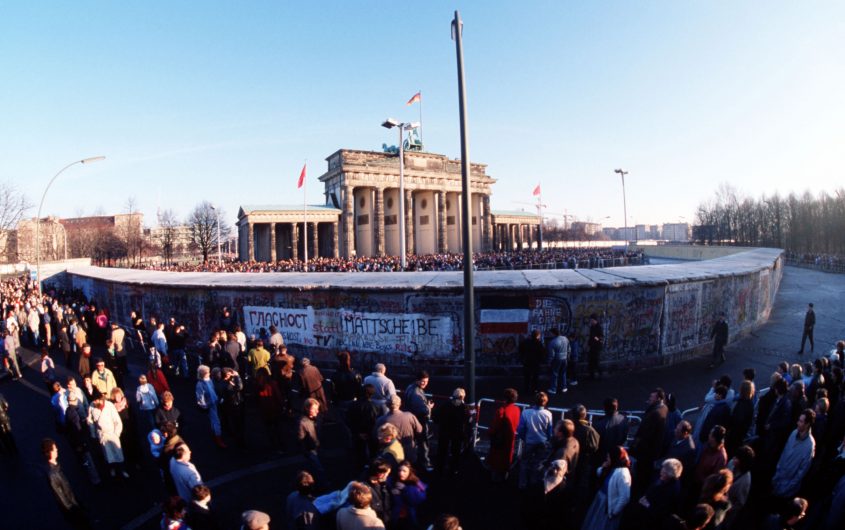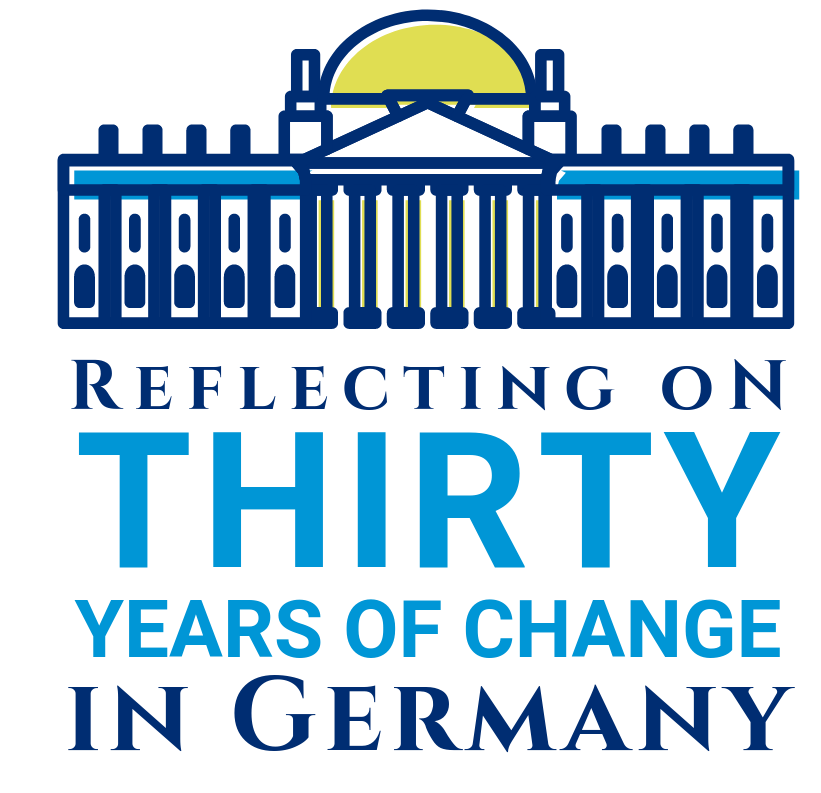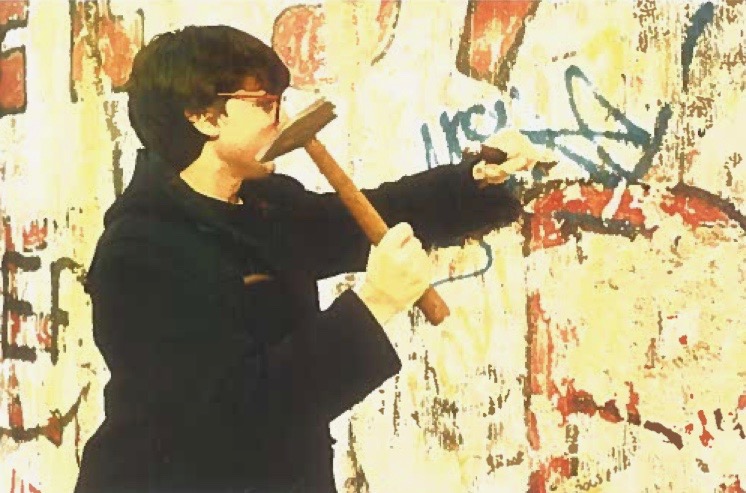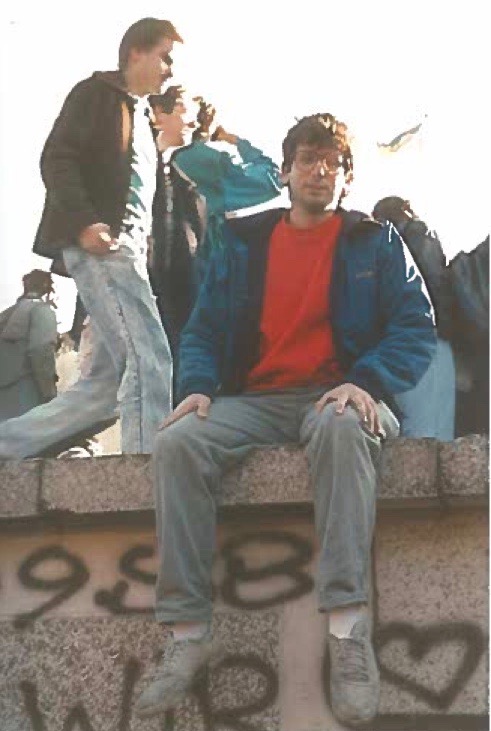
SSGT F. Lee Corkran/U.S. Dept. of Defense via Flickr
Witness to History: An American in Berlin for the Fall of the Wall

David Patton
Connecticut College
David Patton is Joanne Toor Cummings '50 Professor of Government and International Relations at Connecticut College, where he teaches classes on comparative politics, contemporary Europe, the European Union, nationalism and ethnic conflict, German politics, Green parties, and the Cold War.
In his research, he focuses on German party politics, political regionalism, and German foreign policy. In Out of the East: From PDS to Left Party in Unified Germany (Albany, NY: SUNY Press, 2011), Patton chronicles how the Party of Democratic Socialism (PDS), as successor to the discredited Communist party of East Germany, first became a successful regional party and then an increasingly influential national force. In Cold War Politics in Postwar Germany (New York: St. Martin's Press, 1999), he explores the relationship between the Cold War and "chancellor democracy" in the Federal Republic of Germany.
Patton’s publications include “The Alternative for Germany’s radicalization in historical-comparative perspective,” Journal of Contemporary Central and Eastern Europe 25:2 (2017). In “Monday, Monday: Eastern German Protest Movements and German Party Politics since 1989,” German Politics 26:4 (2017), he explores the conditions under which eastern social movements recast political parties in the Federal Republic. He sheds light on past U.S.-German relations in “Navigating Choppy Waters: US-German Relations during the Last Decade of the Cold War,” which was published in Reagan and the World: Leadership and National Security, 1981–1989, Bradley Lynn Coleman and Kyle Longley, eds. (Lexington: University Press of Kentucky, 2017).
As a U.S. Fulbright Scholar, Patton conducted research and taught at Europa-University Viadrina in Frankfurt (Oder), Germany in spring/summer 2014. He was a fellow at the Berlin Program for Advanced German and European Studies and received a research grant from the Friedrich Ebert Foundation. In addition, he has been a visiting scholar at the Minda de Gunzburg Center for European Studies at Harvard University and a visiting researcher at the Berlin Social Science Center.
I think often of the good luck I had in moving to West Berlin in September 1989. The dramatic events of the months ahead were to leave memories that greatly enriched my personal and professional life. At this time of upheaval, I recognized that even the most widely held assumption, such as the durability of Communist dictatorship, may be wildly off the mark. The events of 1989-1990 further revealed the power of an idea: Dismissed as the “life-long lie” (Lebenslüge) of West Germany, the prospect of unification had at first helped provide legitimacy to the early Bonn Republic. Later it conditioned how Easterners and Westerners viewed each other after November 9, 1989.
Read more on the Fall of the Berlin Wall from AGI
 After a year in Göttingen in 1988-89, I started a doctoral fellowship with the Berlin Program for German and European Studies at the Free University of Berlin. I had been closely following the exodus from East Germany and was excited for the opportunity to take day trips to East Berlin. On these trips, I saw restaurants and businesses closed, with signs blaming personnel shortages, and I remember asking myself: Were the cooks sick or had they fled to the West via Hungary? In mid-October, some friends and I visited the Eastern district of Prenzlauer Berg where we chatted in a restaurant with two young East Germans who desperately hoped to leave their country, seeing no future for themselves in the worker and farmer state.
After a year in Göttingen in 1988-89, I started a doctoral fellowship with the Berlin Program for German and European Studies at the Free University of Berlin. I had been closely following the exodus from East Germany and was excited for the opportunity to take day trips to East Berlin. On these trips, I saw restaurants and businesses closed, with signs blaming personnel shortages, and I remember asking myself: Were the cooks sick or had they fled to the West via Hungary? In mid-October, some friends and I visited the Eastern district of Prenzlauer Berg where we chatted in a restaurant with two young East Germans who desperately hoped to leave their country, seeing no future for themselves in the worker and farmer state.
On November 9, I watched on television the live press conference of Günter Schabowski, an SED politburo member. I was stunned when the party man announced what sounded like the opening of the Berlin Wall. I couldn’t believe it. I called my parents in the U.S. to tell them the news, but the connection was soon lost. My attempts to call them back proved futile; the phone lines were overwhelmed by the sheer volume of calls as the news spread out to the world.

The next morning, I went to the Brandenburg Gate and joined throngs scaling the Wall to find a perch on top. Strangers pulled me up. It was a beautiful fall day and the mood was joyous. Many had travelled spontaneously to Berlin to be part of history and the city was in a celebratory spirit. That weekend West Berlin pulsated with East Germans, many of whom had come in smoky Trabants, and armed with 100 DM of “welcome money” that the Federal Republic was distributing. I saw visitors from the East carrying make-shift city maps that had been inserted into West Berlin newspapers since the GDR maps showed West Berlin as blank and unchartered. The newcomers were readily identifiable by their clothing and unfamiliarity with the area. In the gourmet food section of the upscale department store KaDeW, I saw East Germans looking with amazement at the sumptuous victuals and watching with interest as affluent, well-dressed West German customers supped in leisure. It may be one nation, but not one class, I thought at the time.

In retrospect, the path from the Wall falling on November 9, 1989, to unification on October 3, 1990, seems straightforward enough. As barriers opened, however, there were few calling for unification. East Germans had taken to the streets demanding liberty and democratic reform, not one Germany. The transformation from “we are the people” to “we are one people” would come later. Friends of mine attended the November 10 public ceremony in the Schöneberg district of West Berlin when Chancellor Helmut Kohl’s address was drowned out by a determined concerto of whistling. In West Berlin, most had long grown accustomed to the Wall. In fact, I remember at an unsuccessful interview for a spot in a shared apartment for students, one of the residents expressing annoyance at my naïve questions about what life was like in a walled city. After the Wall fell, a joke soon circulated among Western post-materialists disappointed by the lack of revolutionary zeal among their GDR compatriots: “The people have risen up […] and run to Aldi.” This kind of condescending attitude complicated Ossi-Wessi relations in the years to come and contributed to what would become known as “the wall in the heads.” On November 9, though, there was little indication of the coming tensions. I heard reports of unscrupulous merchants hawking bananas at extravagant prices to unsuspecting Easterners and of Trabant tires slashed, but saw none of this. What I do recall was the joy and unbridled enthusiasm for new freedoms in the East. Soon after November 9, friends and I headed back to the Wall with some hammers and chipped off a few small pieces of Berlin Wall that I now show my students. I didn’t know that dust from the Wall that flew in my face would contain asbestos.

The coming months in Berlin were among the most interesting of my life. As East Germans stormed secret police headquarters and swelled pro-unification demonstrations in winter 1990, voted in numerous elections in spring and summer, and cheered the Deutschmark on July 1, the two German states moved toward national unity. On October 3, I was at the Reichstag for the unification ceremony at which Chancellor Kohl, the former GDR prime minister Lothar de Maiziére, and the former chancellor Willy Brandt gathered. It was a stirring occasion without the protests that had marked Kohl’s appearance on November 10. However, the mood in the East had already begun to turn as the economic challenges of unification grew apparent.
On November 9, I was aware of being present at a historical juncture. I was partly right, as Communism soon collapsed in East Germany and throughout the eastern bloc, but the track toward unification that later seemed unstoppable was not yet apparent to me, or most other observers. Thirty years later, few if any want a second German state back and no one misses the Berlin Wall. After it fell, Willy Brandt famously remarked on circumstances in which “again grows together, what belongs together.” Although initially many questioned the second half of his statement and, for a while at least after unification, the east and west appeared to grow further apart than closer together, the last thirty years have shown how prescient Brandt had been.








